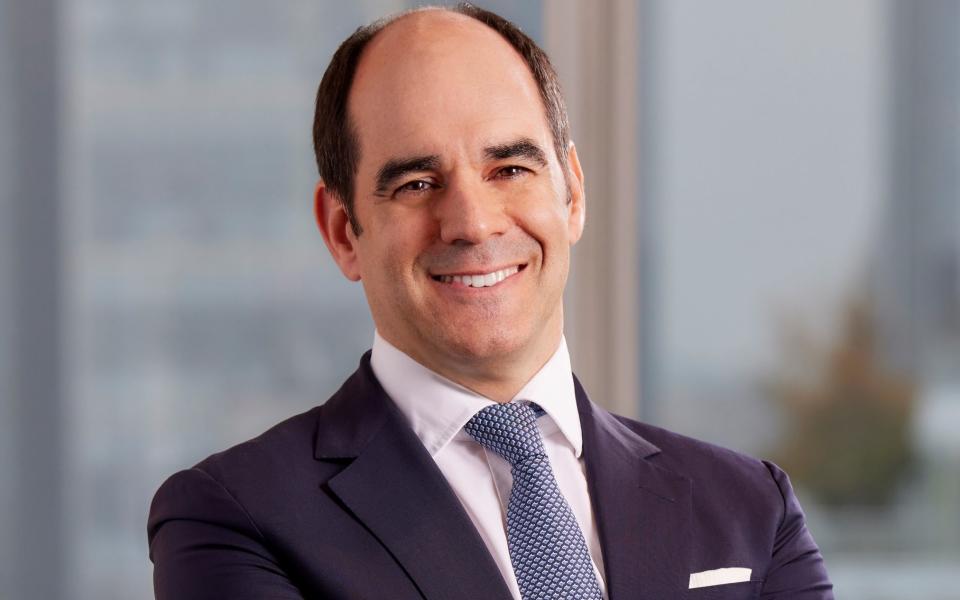Legal & General’s new boss bets on ageing Britain

António Simões has big shoes to fill. The Portuguese former banker took over from Sir Nigel Wilson as the chief executive of Legal & General (L&G) in January, succeeding an executive whose 11-year tenure was so significant it earned him a knighthood.
Sir Nigel forged a doctrine of “inclusive capitalism” at the 188-year-old insurer, using its financial heft to back projects L&G believed delivered social good as well as returns.
What Simões plans to do will become clear on Wednesday when he is scheduled to give a two-and-a-half-hour presentation to L&G investors in the City, following a root-and-branch review.
“It’s the first time he’s going to really be talking to the market,” says Abid Hussain, analyst at Panmure Gordon. “He needs to have a plan but he doesn’t need to reinvent the wheel. The business is not broken but they need to do something to get the share price going.”
L&G, which has 14 million retail customers, is a reliable company for many investors but shares have flatlined over the past decade.
While “inclusive capitalism” won plaudits from politicians and ESG advocates, doubts have emerged about the strategy. L&G shut down its affordable modular housing business last year after losing almost £100m.
With Sir Nigel gone, investors are hoping Simões can bring a fresh perspective to the staid giant.
Central to the revamp is likely to be L&G’s business buying assets from shuttered defined benefit pension schemes, which promise retirees a set income.
The market for so-called “bulk annuities” is booming, with £50bn worth of deals struck last year and another £80bn estimated this year. Insurers take on the obligation of paying pensioners in return for being given the potentially lucrative stocks and bonds portfolios that fund the pension payments.
Bulk annuities are attractive to insurers because it allows them to acquire billions of pounds worth of assets at a small discount. They can liquidate the stocks and bonds and funnel the cash into higher yielding investments such as property and infrastructure, which pay better returns.
L&G, which has 11,000 employees, is considered the biggest and best in the field, having done £14bn worth of bulk annuity deals last year, including a £4.8bn swoop for a Boots scheme covering 53,000 former shop workers.
Shareholders want Simões to go deeper into this market.
“We think the new chief executive should be capitalising on the strength of L&G’s market position, know-how, and balance sheet to take advantage of the opportunities presented,” Ambrose Faulks, Artemis fund manager, says.
At the same time as pushing deeper into the pensions market, investors also want Simões to sell-off or shut down some of Sir Nigel’s more adventurous bets.

Due to the large numbers of pensioners L&G has to pay, Sir Nigel spent years moving the group’s money into more esoteric areas such as housebuilding and heat pumps, balancing liabilities with higher returning investments.
However, that has led to something of an identity crisis for the group. While insurers traditionally put money into boring old gilts, low rates have meant L&G has expanded into increasingly novel areas including private credit and property. That has made the business harder to understand.
Today, Legal & General is a four-headed monster: a bulk annuity business, known as L&G Institutional; a £1 trillion fund manager called L&G Investment Management (LGIM); a infrastructure and property manager called L&G Capital (LGC); and a retail business which sells workplace pensions and life insurance.
Simões is being urged to trim the insurer’s bloated investment businesses, including L&G Investment Management (LGIM) and L&G Capital (LGC).
Prime for a sale is Cala Homes, the 10th largest housebuilder in the UK. Cala is largely disliked by investors because the group sits on L&G’s balance sheet and investors have to understand the dynamics of the property market.
Rothschild has reportedly been lined up to run an auction that is likely to value Cala at around £750m.
“There’s a bit of pruning to be done within LGC and that could roll into the bigger beast that is LGIM,” says Hussain.
“Cala Homes is an obvious candidate for them to exit and there probably are going to be others in their start-up ecosystem, where they invest directly into early stage start-ups.”
More immediately, Simões could launch a share buyback to keep investors happy.
Nearly every financial services company in the UK, from Aviva to Barclays, is currently using the buyback tactic to push shares up and reward investors. Analysts expect L&G will join them, buying up between £250m and £400m of its stock.
Described as “charismatic” with a “self-deprecating” sense of humour, 49-year-old Simões is considered something of a financial services prodigy.
In 2012, he became the youngest chief executive ever to run HSBC’s UK business at just 37, and was once tipped to become the bank’s overall boss but was overlooked by chairman Mark Tucker.
He was lured to L&G by chairman Sir John Kingman, having worked at Spanish bank Santander where he was also considered a candidate for the chief executive role by Ana Botin, the bank’s chair.
Married to husband Tomas with whom he has two children, Simões is the first openly gay FTSE 100 chief executive and once joked it was rarer for a “short, bald, Portuguese” man to become the chief executive of a bank than a gay man.
Simões will present his new strategy this week at Landing Forty Two, the highest event space in the UK, which sits inside the City’s ‘Cheesegrater’ building. L&G shareholders will be hoping Simões’ ambitions match the sky-high venue.

 Yahoo Finance
Yahoo Finance 